That They Might Have Life
When I was a kid, my dad liked to run quizzes at the dinner table. He’d ask us things like whether a cow was an herbivore or a carnivore. He’d quiz us on the difference between reptiles and amphibians, or challenge us to name as many insects as we could. By the time I saw my first animal classification chart in biology class—that tree that divides vertebrates from invertebrates, with branches for birds, mammals, fish, mollusks, and more—I was ready. I’d been sipping apple juice, moving peas around, and discussing thoraxes and molars for years.
We grew up watching nature documentaries, and to this day I still geek out over new footage of animals in the wild, especially at night or in high definition. Can you imagine being the camera crew capturing footage of sharks hunting? Or filming the wildebeest migration across the Mara River, teeming with crocodiles? The sheer drama of it is still thrilling to me.
Now, think with me for a moment about the difference between the animal classification chart and the animal kingdom itself. It feels totally different to study the classification tree and to be watching real animals. Sure, I think it’s fun to get a cognitive understanding of genus, species, and their relationships. It’s a powerful tool. But it’s not the kingdom.
To understand the animal kingdom, you’ll have to enter it; crouch down in the grass, watch the creatures hunt, rest, and survive. In the ecosystem, you’ll see frogs calling from turtle shells, fish cleaning all kinds of jaws, and flies dancing around every nostril. You’ll notice how deeply intertwined they are. It’s wild, unpredictable, and beautiful. How strangely baffling it is to watch animals fulfill the measure of their creation without performing or overanalyzing—they just don’t resist their essence or their instincts. And the messy, balanced, natural world carries on sustaining glorious vibrancy, feeding on itself, and yet continuing forever.
Even just driving with the windows down, I feel a shift in my body. It feels good to be buffeted by wind, surprised by a bird’s swoop, delighted by the tiny speckles in fallen leaves. It’s nice to just be living and not always thinking. I wonder how important it is for humans to feel small and subjected to the forces of the earth.
Just like an animal classification chart helps us understand relationships, the Plan of Happiness helps us understand eternal truths. But cognitive understanding isn’t the same as experiential knowing. The Kingdom of God is not a set of circles—it’s a living invitation. It’s wild, growing, interconnected, and gloriously alive. And it’s meant to be entered and experienced.
Jesus doesn’t invite us into a diagram. He invites us into life—abundant, holy, joyful, and real. He often spoke of the Kingdom of Heaven as both an eternal destination AND a state of joy we can enter right now.
Elder Patrick Kearon recently taught:
“The intent of the Father’s great plan of happiness is your happiness—right here, right now, and in the eternities.”
St. Francis of Assisi is credited with saying, “Creation is the first Bible.” He believed that God revealed himself not only through scripture but through the beauty and wonder of the earth. I love believing that the natural world is a form of divine revelation.
From nature I’ve learned that God loves life in all its variety, detail, and dazzling intricacy. Each part of his creation wants to live and thrive, to exhaust itself before surrender. The closer you look at something, the more beautiful it gets. Zoom into the cellular or microscopic level: there is beauty, space, geometry—divine fingerprints on everything. Perhaps he made it mysterious, enticing, and fascinating to invite us—even compel us—to engage with the world around us at every level. And in John 10:10, the Savior says:
“I am come that they might have life, and that they might have it more abundantly.”
Watching the world around me, I see that connection is vital. When I was in school, I was taught that the oxygen I breathed came from trees. They inhale carbon dioxide and exhale oxygen. Trees are incredibly important—and have you heard of diatoms? They are microscopic algae in the ocean that contribute more oxygen than all the rainforests combined. The air you breathe has cycled through various forms of life—maybe thousands or millions—and will continue to connect you to the world around you. There are 750 species of fig tree, and each one is matched with one species of fig wasp. They rely on one another completely in a fragile, fruitful alliance. The system is so exact and delicate that they cannot exist without each other. The world is replete with symbiotic relationships, connections that are vital to the health of the whole system. One small thing taking stewardship over another small thing, and then multiplying and replenishing to bless the whole earth. To me, this has implications for our human societies. If we are indeed creatures of this kingdom, we should follow the causes and the questions that call to us. These diverse interests and instincts are how we fulfill “the measure of our creation.”
Finally, creation testifies to me that all things can be consecrated for good. It’s hard to watch the circle of life play out on a nature show—to see the predator take the prey. To see the extreme elements create suffering and loss. I squinted and cringed over more than one young gazelle hunt. And yet, in the middle of all that complexity, the Book of Mormon reminds us: “There must be opposition in all things” (2 Nephi 2:11). Life and death are not signs of a broken plan—they’re part of a divine rhythm. In a discourse on opposition, we read, “Adam fell that men might be; and men are, that they might have joy” (2 Nephi 2:25). That truth lives in nature. I love indigenous traditions around the death of an animal. It is never seen as meaningless or trivial. Rather, it is a sacred event that requires gratitude, respect, and reverence. Death is consecrated not only because of the gifts the animal provides but because it is understood as part of a divine cycle where all life is interconnected. For example, as Lewis Hyde describes in his book The Gift,
The Maori have a word, hau, which translates as ‘spirit,’ particularly the spirit of the gift and the spirit of the forest which gives food. In these tribes, when hunters return from the forest with birds they have killed, they give a portion of the kill to the priests, who, in turn, cook the birds at a sacred fire. The priests eat a few of them and then prepare a sort of talisman, the mauri, which is the physical embodiment of the forest hau. This mauri is a gift the priests give back to the forest, where, as a Maori sage once explained to an Englishman, it ‘causes the birds to be abundant ... , that they may be slain and taken by man.
There are three gifts in this hunting ritual: the forest gives to the hunters, the hunters to the priests, and the priests to the forest.
The Cree see the animals not as being hunted, but as giving themselves up willingly as part of a relationship between human and animal, a sacred cycle of life. The gralloch prayer is an old Scottish tradition giving thanks for the life of an animal just before making any cuts to the animal’s body. The Cherokee unite these practices, praying to the elements before a hunt, for forgiveness for taking an animal’s life after the hunt, and offering a burnt sacrifice of part of the animal. These prayers and rituals affirm that the animal’s life, and death, have a purpose—to sustain the people and the natural world, and to maintain the balance of the earth. The animal’s spirit is honored and remembered. Experiences with birth and death are easily sterilized out of modern life, and we lose some truth when we forget about them.
In the world that God made, birth and death are happening millions of times a day. These moments—life force in, life force out—emphasize how miraculous it is that a soul animates a form, until it doesn’t. The joining of body and soul is sacred.
A few years ago, I thought I would commemorate spring with my children by hatching chicken eggs in an incubator. We waited with anticipation for twenty-eight days until the first pips emerged in the shells. It was agonizing to be patient as the little birds worked themselves out, and we watched and checked on them with devout attention. They were delightful! The children loved to see them fluff up and gave them adorable names. We moved them to a bigger space on the main floor of our house so we could watch them toddle around. Just a few days later, horror rippled through the family as we suddenly realized most of the chicks were quaking and gasping. We knelt around the box, tears streaming down our faces, holding the baby chicks and trying to work out what was causing their suffering. The children prayed aloud earnestly, while I desperately scrambled to find what was wrong. But within twenty agonizing minutes, the chicks died in our hands. It was brutal. The confusion, the loss, the unfairness of it all! Not to mention the guilt I felt when we pieced together that I had caused their deaths by heating up the oven for the first time since their hatching, creating a true “canary in the coal mine” situation. I was totally responsible for the loss of innocents (the chicks) and the loss of innocence (my children witnessing slow death). I am not ashamed to say I cried for days. We decorated a rock in the backyard with the words “You were truly Wonderful,” and they were buried beneath it after a small funeral.
To have young chicks die so soon after birth was poignantly painful. This experience stirred up deep grief over what could seem to be a small thing, reminding me of other premature losses. We were staring down at the fragility of life, a few days after feeling the pure wonder of it. It is the closest I have ever come to understanding what it must have been like for the Israelites to sacrifice a perfect lamb. Eitan Bar, commenting on Leviticus 7:11, stated, “life belongs to God - and that life, that pulse, that holy vitality, is found in the blood.” Some people tried to soothe me with explanations such as,“they don’t live long anyway, you were going to return them to the farm, there are plenty of chickens in the world”—in a sense, offering me a chart or a map to resolve my feelings. But I was too connected to the birth and death of these chicks to let cognitive reasoning override the real experiential knowledge I was gaining through grief—about the glory of life. The lovely, devastating, sacredness of it all.
Everyone I know has experienced well-meaning comments that failed to speak to the heart of their experience. I am most familiar with the versions that happen in church communities: “It’s all about God’s timing,” “they have their agency,” “everything happens for a reason,” or “death is part of The Plan.” These platitudes, cognitive explanations, or “uplifting” comments can feel so dissonant that the receiver is left baffled. As the occasional recipient, I’ve wondered, “Am I invisible? If that didn’t land for me, do I even have a testimony? Why do I feel like shaking these good people who want to comfort me?” As a witness to others in this situation, I’ve listened while good-hearted, faithful people grapple with this dissonance. They feel too messy to be considered converted. They wonder why they aren’t fully comforted by our maps of eternal perspective or our charts about the Plan of Salvation. They worry that their families will live in distinct stacked circles in heaven. They can’t believe how much they are hurting even though they “know better.”
Over time, these experiences have shaped two reflections for me. First, our cognitive understanding—the charts and doctrines we cling to—can’t truly buffer the intensity of life. There is no sentence, thought, or platitude that can soften death, pain, or loss. And maybe that’s exactly how it was meant to be. We aren’t called to analyze or anesthetize each other’s burdens; we’re called to bear them with one another, in an embodied, messy, deeply human way. Isn’t that why it stirs us so deeply that Jesus wept before raising Lazarus? He didn’t start with a sermon or a promise. He entered the grief fully—and in that raw encounter with sorrow, a miracle unfolded. The miracle of compassion. And then came the miracle that was Resurrection. Maybe, as saints, we’re invited to do the same: to let things hurt, to sit with sorrow. Perhaps we are asked to trust that presence, and before all is made right, some other holy miracle is happening.
Second, we shouldn’t confuse the chart for the kingdom. Life testifies more fully of truth than any reductionist depiction ever could. We know so many miraculous truths and so much has been revealed through prophets—but perhaps even more has been revealed through the earth itself. If you could calculate all of creation, how many testaments would you find that there is a place for every living thing to be fulfilled and joyful—connected to generations past and present—in relationships of stunning variety?
The chart is a cerebral look at nature, not a lived, embodied one, and thus is only tangentially connected to reality. When we numb ourselves to grief and wildness, we separate ourselves from the miracles. When we embrace only a description of reality instead of reality itself, we separate ourselves from Divinity. Human nature is to be a divine soul in a mortal body set upon a natural world, not a stick figure on a chart making our way from circle to circle. If we use our charts of doctrine to protect ourselves from pain or mystery or the living of life itself, those charts shield us from experiencing.
The more I look at nature, the more I see that it is an invitation to discover God’s plan—not just for the world, but for us. Creation exists not just to be studied—it exists so we can experience it, be changed by it, and ultimately find joy in it. That’s God’s plan. The beauty, the interdependence, the life all around us—these aren’t just miracles of biology; they’re reflections of a loving Creator, inviting us to understand that His plan is one of profound connection and joy. Nature reminds me to be grateful for the hidden miracles the world depends on. Nature reminds us that although the plan of happiness can be reduced to a pictograph, the realities of our eternal families must be as vibrant and interconnected as any other ecosystem.
I’m grateful for the charts that helped me make sense of things—those dinner-table quizzes that trained my mind to recognize patterns. They sparked curiosity and pointed me toward order.
But now I know that real understanding doesn’t live in categories. It lives in connection. In holding fragile things. In watching life and death unfold. In remembering that we are part of something wild and sacred.
The Kingdom of God, like nature, cannot be reduced to a diagram or studied from a distance. Too much would be lost. And although it feels brutal sometimes, we lose again when we separate ourselves from embodied life. In order to honor the intention of the Plan, I think we must let ourselves feel it all. The chart is the outline, and life itself gives full shape to God’s Kingdom.
Wild, raw, exposed to the elements. Unsheltered from death, loss, and struggle. The Plan of Happiness isn’t a chart; it’s an invitation to this life, and we are promised that all these experiences will be for our good. It’s for “the Word to be made flesh”—and for us to know, according to the flesh, things we could only know with a body. God’s great Plan of Happiness is to take all things and consecrate them for our good. It is a calling to be deeply alive.
Brooklyn Miller is an Associate Marriage and Family therapist and is passionate about understanding the opportunities for growth in our closest relationships.
Rhythm of Bird Flight (1935) by Erika Giovanni Klien (1900–1957).



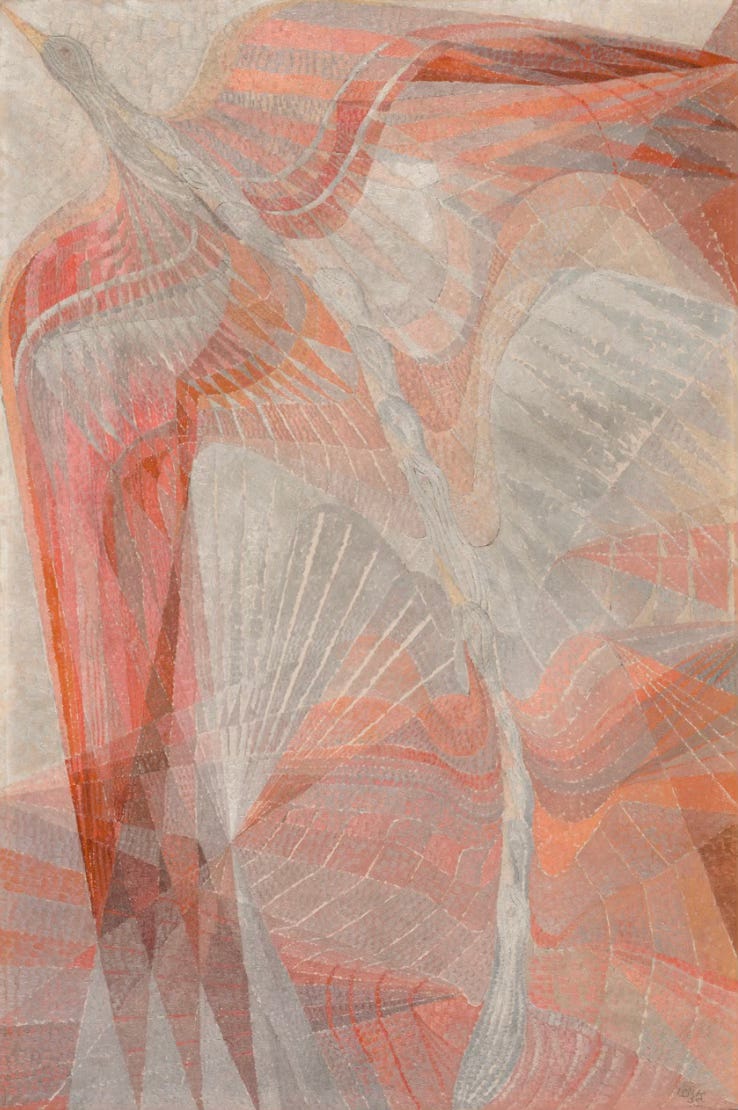
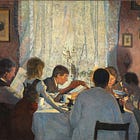
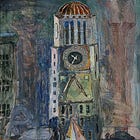
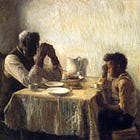
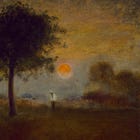

This was my all time favorite essay from Wayfare! It solidified things my heart has felt for a long time that are elemental to my understanding of "The Plan". I appreciate how we limit ourselves when we see the diagrams of kingdoms as doctrine rather less tools to understand something vast and wondrous and so complex and intricate. Thank you!
A beautiful essay. Thank you.